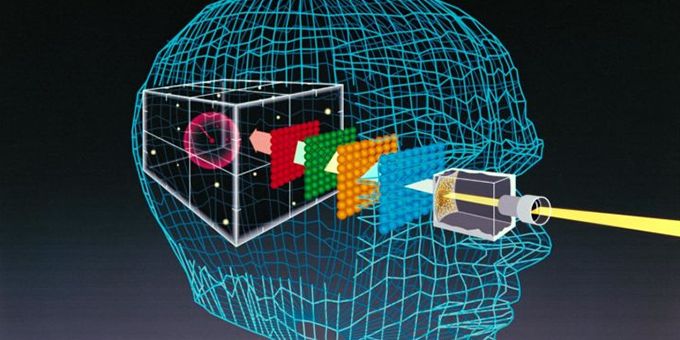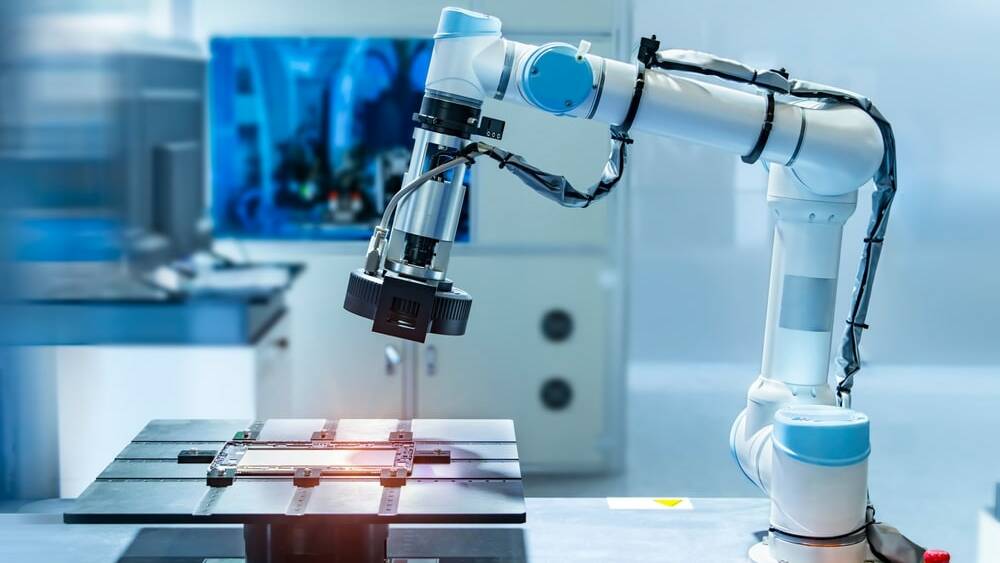How advanced analytics improve results from your robotic vision
Wiki Article
Why Robotic Vision Is Essential for Advancing Accuracy in Manufacturing Industries
Robotic vision has actually arised as a critical component in modern-day manufacturing. It empowers equipments to analyze visual information with exceptional accuracy. This ability boosts high quality control and minimizes the likelihood of issues. As sectors endeavor for better performance, understanding the details of robotic vision becomes important. The interaction in between technology and functional procedures elevates essential inquiries concerning future advancements and their implications. What exists in advance for accuracy in production?Recognizing Robotic Vision Technology

Enhancing Quality Assurance With Robotic Vision

Boosting Operational Efficiency Via Automation

Automating production procedures via robotic vision greatly improves manufacturing rate, enabling quicker turn-around times. This technology likewise decreases error prices, making sure greater precision in operations. In addition, streamlined source monitoring is achieved, bring about much more effective use products and labor.
Enhanced Production Speed
While the combination of robotic vision in manufacturing has changed functional procedures, its most significant advantage lies in enhanced production rate. By utilizing advanced picture processing and real-time data evaluation, robotic vision systems can swiftly recognize and react to manufacturing demands. This sped up responsiveness removes hold-ups typically associated with manual inspection and decision-making processes. In addition, these systems can operate constantly without exhaustion, making certain that production lines maintain high throughput. The capability to discover and deal with concerns instantly even more simplifies operations, permitting makers to maximize outcome levels (optical fibre diameter analyser). Firms profit from decreased cycle times and enhanced efficiency, positioning them competitively in the market. Boosted manufacturing rate, driven by robotic vision modern technology, ultimately leads to enhanced functional efficiency throughout the manufacturing landscapeLowered Error Fees
As production rate boosts, keeping accuracy becomes extremely important in making processes. Robotic vision systems significantly add to decreased error prices by supplying exact dimensions and real-time assessments. These advanced systems utilize high-resolution cams and advanced formulas to discover defects, imbalances, or inconsistencies in products throughout setting up. By automating quality assurance, producers can swiftly identify and correct problems that human examiners may neglect. This not only minimizes waste yet likewise boosts overall item quality. Additionally, the combination of robotic vision lowers irregularity in production, ensuring that each product satisfies rigorous specs. Suppliers experience less pricey recalls and boosted consumer satisfaction, ultimately leading to a much more efficient and profitable operational design.Structured Resource Management
Effective resource monitoring is crucial for making best use of operational effectiveness in manufacturing, specifically when incorporated with robotic vision systems. These systems improve the ability to keep track of and allocate resources precisely, ensuring that materials and labor are utilized efficiently. By utilizing innovative aesthetic technologies, suppliers can determine inefficiencies in genuine time, decreasing waste and boosting manufacturing timelines. On top of that, robotic vision makes it possible for exact inventory tracking, lessening the risk of overstocking or stockouts. Automation of these procedures not just simplifies operations but likewise allows human employees to concentrate on higher-value tasks, promoting advancement and efficiency. Consequently, companies can attain considerable expense financial savings while maintaining high-quality requirements, eventually placing themselves extra competitively in the industry.
Decreasing Human Mistake in Manufacturing Processes
Human error remains a substantial challenge in making processes, often leading to expensive mistakes and ineffectiveness. In atmospheres where accuracy is paramount, also minor gaps in judgment can lead to defective items or delays in manufacturing timetables. Robotic vision systems can minimize these threats by providing exact and consistent surveillance of manufacturing operations. By automating jobs such as quality assurance and production line examinations, these systems decrease the dependence on human oversight, thus minimizing the potential for errors.Moreover, robotic vision modern technology enhances data precision, enabling real-time modifications based on visual responses. This capability assures that any type of deviations from established requirements are promptly identified and remedied, even more reducing the probability of mistakes. As suppliers progressively take on robotic vision, they can anticipate not only to boost precision and performance yet also to promote a more secure working environment by relieving the pressure on human drivers.The Duty of Expert System in Robotic Vision
Expert system markedly enhances robotic vision by employing artificial intelligence formulas and progressed photo processing strategies. These innovations enable robots to analyze aesthetic information with greater precision, improving both efficiency and precision in making settings. Therefore, the combination of AI right into robotic vision systems represents a crucial improvement in automation.Artificial Intelligence Algorithms
Maker understanding formulas are revolutionizing robotic vision in production by enabling devices to translate and analyze aesthetic data with amazing accuracy. These formulas permit robotics to pick up from huge datasets, adjusting to brand-new scenarios and enhancing their efficiency gradually. By leveraging strategies such as monitored and unsupervised discovering, robotic systems can recognize patterns and anomalies in real-time, see which enhances quality assurance and lowers waste. In addition, maker understanding assists in much better decision-making processes, enabling robotics to enhance their activities based on discovered experiences. As these algorithms advance, they equip robotic vision systems to execute progressively complicated jobs, inevitably driving effectiveness and precision in making procedures. The assimilation of machine discovering as a result plays a pivotal duty in the innovation of robotic vision innovation.Image Processing Techniques
Enhancing the capabilities of robotic vision, image handling methods play an important duty in making it possible for systems to translate visual details effectively. These strategies entail algorithms that improve image quality, extract pertinent functions, and recognize patterns within visual information. By utilizing methods such as edge detection, segmentation, and object acknowledgment, robotic systems can identify and classify components with amazing precision. The assimilation of synthetic knowledge even more enhances these techniques, permitting for adaptive discovering and enhanced decision-making in dynamic atmospheres. Therefore, robotic vision systems can not only identify flaws but likewise enhance procedures, bring about enhanced efficiency and accuracy in manufacturing. Subsequently, the constant advancement of photo handling methods continues to be pivotal to the evolution of robotic vision in industrial applications.Future Fads in Robotic Vision for Manufacturing Industries
As industries progressively prioritize effectiveness and precision, the development of robotic vision technology is established to change producing processes substantially. Future fads suggest considerable developments in synthetic knowledge and machine discovering combination within robotic vision systems. These enhancements will improve real-time decision-making capacities, permitting robots to adjust to varying conditions autonomously. Moreover, the adoption of 3D vision systems is expected to increase, providing more precise spatial awareness and item acknowledgment. Cooperations in between robotics and human workers might additionally evolve, with innovative vision systems promoting much safer and much resource more reliable interactions. Furthermore, using edge computing will likely allow faster information handling, reducing latency and improving operational responsiveness. As these trends unravel, the manufacturing industry stands to take advantage of boosted top quality control, minimized waste, and structured workflows, ultimately causing enhanced competitiveness in a swiftly changing market.Frequently Asked Concerns
How Does Robotic Vision Differ From Standard Maker Vision Equipments?
Robotic vision incorporates sophisticated formulas and real-time processing, making it possible for vibrant interpretation and communication with settings. On the other hand, traditional maker vision primarily concentrates on static photo capture and analysis, restricting flexibility and responsiveness in complex production scenarios.What Industries Benefit The Majority Of From Robotic Vision Innovation?
Various industries profit greatly from robotic vision innovation, including automobile, electronics, and food handling. best site These markets take advantage of enhanced accuracy, performance, and adaptability, eventually enhancing manufacturing top quality and lowering operational prices with advanced automation solutions.Can Robotic Vision Solutions Be Integrated With Existing Production Equipment?
Robotic vision systems can indeed be integrated with existing manufacturing devices. This combination enhances operational efficiency, enabling for smooth collaboration in between traditional equipment and progressed aesthetic modern technology, ultimately boosting total production procedures and results.What Are the Costs Related To Applying Robotic Vision Solutions?
The expenses associated with executing robotic vision services differ significantly, affected by factors such as system complexity, needed software, equipment elements, combination with current equipment, and continuous maintenance costs, eventually influencing total roi.Just how Do Maintenance and Support for Robotic Vision Systems Work?
Maintenance and support for robotic vision systems involve routine software program updates, hardware assessments, and troubleshooting. optical fibre diameter analyser. Vendors generally supply solution agreements, making certain prompt assistance and reducing downtime to preserve peak performance and reliability in industrial applicationsReport this wiki page